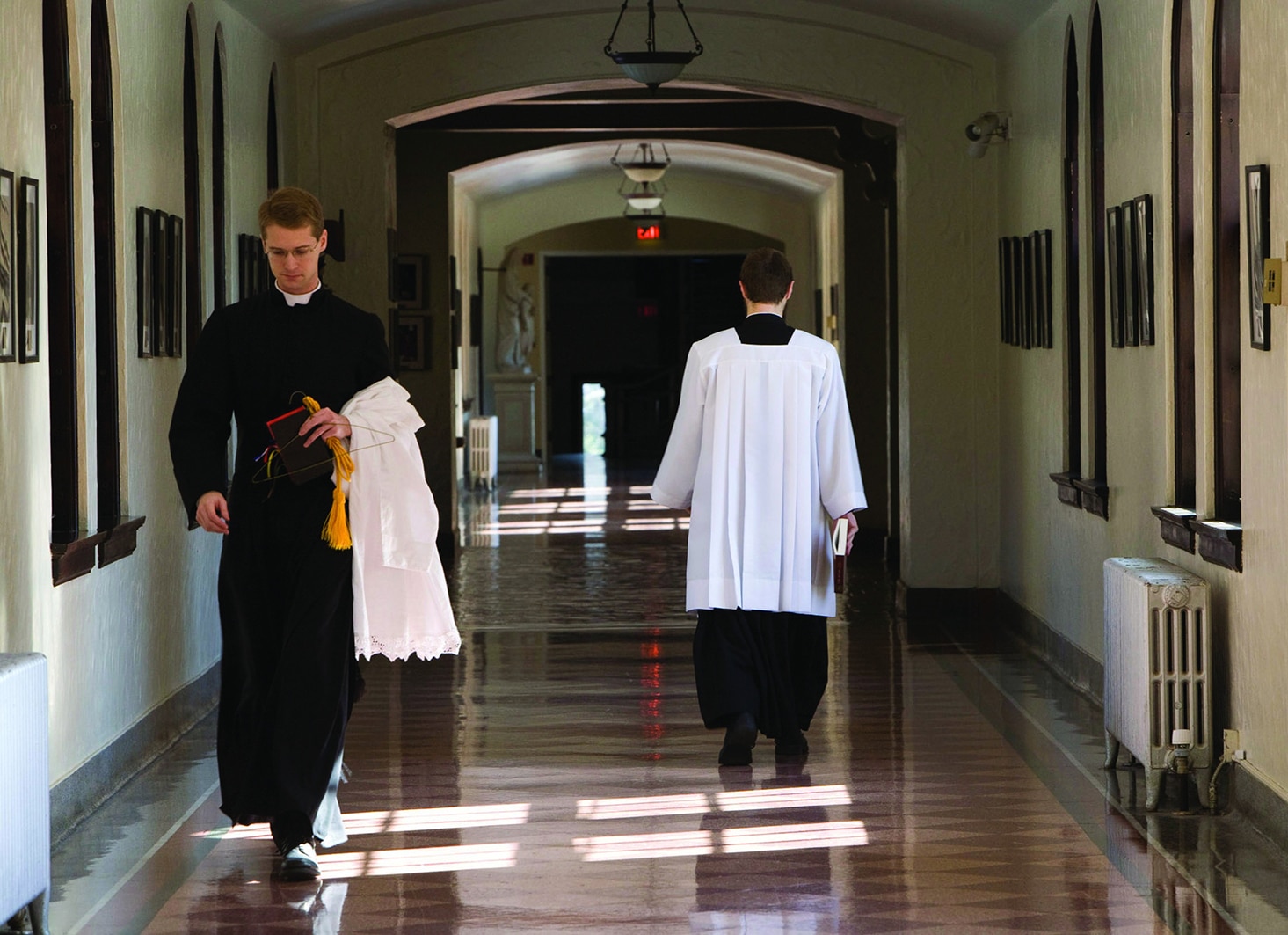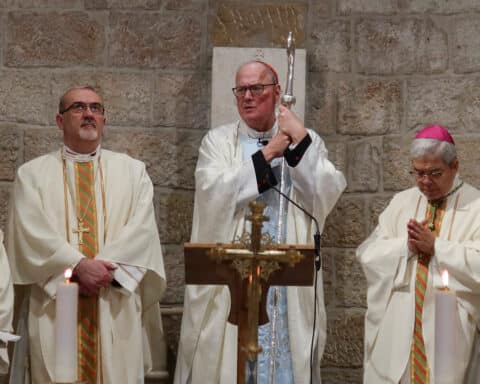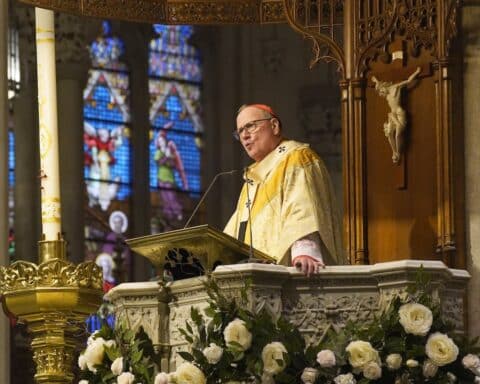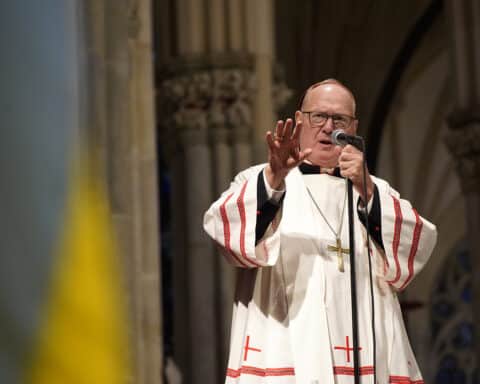In late August, Cardinal Dolan wrote an op-ed in “America” calling for a significant reform of Catholic seminaries. Informed by his significant pastoral experience, the cardinal proposed greater excellence in seminary formation by way of consolidation: fewer, better-financed and better-staffed seminaries in four or five distinct regions of the country. Such an arrangement would signal a reallocation of resources indicative of greater responsibility on the part of ecclesiastical leadership: there would be an increased “return on investment” because the seminaries remaining would be better-funded, better-staffed and better-positioned geographically to serve the Church in America (instead of the majority clustered in the northeast), freeing many of the priest faculty at current seminaries for parish ministry assignments in their own dioceses.
The proposal offered by the cardinal has some merit, specifically in the re-examination of the resources available to dioceses throughout America and their proper utilization in the formation of the next generation of priests. Be that as it may, it may be more to the point to consider a different kind of reform in order to achieve the excellence that Cardinal Dolan desires. It may be that what is needed most in light of the clear and present challenges we face is not a consolidation of the existing seminary formation structure, but rather a renewal and a recasting of the formation structure itself.
Focus on subsidiarity
Such a renewal would not mean deviating from the present canonical structure of seminary formation, nor would it require anything less than the utmost adherence to the recent ecclesial documents specifying the nature and demands of seminary formation (the 2016 Ratio Fundamentalis and the “2022 Program for Priestly Formation”). It would involve creativity within this ecclesial vision of formation, with an emphasis upon the demands of authentic and integral formation, according to the whole person and the whole mission of the priest. A problem that principally concerns material resources can easily be solved through consolidation; a problem that principally concerns persons usually requires more than this; it usually requires relationship and subsidiarity. The problem of seminary formation undoubtedly features both problems; precisely because this is the case, relationship and subsidiarity must lead in the consideration of material resources if formation is to retain its authenticity and its quality.
The Church’s vision of formation does not start with seminary structures, but rather with individual bishops and their dioceses. Bishops are “primarily responsible for admission to the Seminary and formation for the priesthood” (Ratio Fundamentalis, No. 128). Even when a seminarian is sent to a regional or national seminary for his formation, the formators at that institution do not displace the bishop’s ultimate responsibility for the seminarian, but rather represent it: the bishop engages the seminary to assist him in the formational process for which he is principally responsible.
Any proposed reform, then, should begin with the following question: What does a particular bishop of a particular diocese require in order to form this seminarian authentically and integrally? This is a form of ecclesiastical subsidiarity that recognizes the bishop as the one who, as the “ordinary and immediate” pastor of a particular church, “performs for the faithful the office of teaching, sanctifying, and governing” (see Christus Dominus, No. 2); such authority includes the bishop’s responsibility as the ordinary and immediate formator for those men who may become the priests of his diocese. In the explicit context of priestly formation, then, such subsidiarity is articulated in the Ratio Fundamentalis when it suggests that a “suitable solution” should be found at the regional or national level, “when circumstances do not allow for [a diocesan Seminary]” (No.188).
This statement is not specific to the Ratio but echoes the following statement in the Code of Canon Law: “where it is possible and expedient, there is to be a major seminary in every diocese; otherwise, the students who are preparing for the sacred ministries are to be entrusted to another seminary, or an interdiocesan seminary is to be erected” (Canon 237.1). This strong emphasis — even if qualified — upon the importance of local, diocesan-based formation does not receive the attention and consideration that is its due, something that should give us pause in light of the proposal from Cardinal Dolan.
Fatherhood of the bishop
Although a consolidation model of reform represents a worthy attempt to preserve solidarity in quality and faithfulness of teaching, it obtains this at the cost of ecclesiastical subsidiarity. Financial matters and those of qualified personnel notwithstanding, one must grapple with the thinking behind the stated preference of the Church in the texts just cited for locally-based formational programs and institutions.
One such trajectory of thought is to consider the bishop’s role as father: “[the presbyters of a diocese] form one presbytery and one family whose father is the bishop” (Christus Dominus, No. 28). Playing out the implications of this analogy, one should note first that while it is true that natural fathers rely in important ways upon the larger community for the rearing and support of their children, nevertheless, irrespective of financial and professional resources, the responsibility for fatherhood is never relinquished; if anything, the absence of financial and professional resources heightens the paternal responsibility.
Admittedly, no one is expertly prepared for this duty. But again, this fact alone does not remove his paternal responsibility. It is essential for a father to recognize the responsibility gifted to him by his status, to discharge this to the best of his capacity, and to do this with the help of the community around him. This applies directly to a bishop and the seminarians of his diocese, understood first with regard to the immediate diocesan community, and only thereafter with regard to non-local seminary communities. This is not because expertise is not important on its own merits, but rather because expertise is not the ultimate good at play.
Pope St. John Paul II’s apostolic exhortation on the formation of men for the priesthood, Pastores Dabo Vobis, gave voice quite eloquently to the simple paternal virtue of presence, which is perhaps even more foundational than expertise: “the bishop should make a point of … in some way ‘being’ with [those preparing for the priesthood] as a way of giving significant expression to his responsibility for the formation of candidates for the priesthood. … In particular, his presence and by his sharing with candidates for the priesthood all that has to do with the pastoral progress of the particular church, the bishop offers a fundamental contribution to formation in the ‘sensus ecclesiae,’ as a central spiritual and pastoral value in the exercise of the priestly ministry” (No. 65).
In light of this line of reasoning, it is fitting for bishops to take up their role as head formators in a much more literal and immediate sense, focusing more on the foundational impact of presence rather than almost reflexively delegating the majority of priestly formation to seminaries outside his diocese. While seminaries excel at providing experts as delegated formators, it is also the case that delegation also introduces distance — both personal and (most typically) geographical. It seems unfair to expect a bishop to publicly declare and act upon a seminarian’s readiness for ordination if he, as head formator, does not have a personal relationship with the seminarian that includes the implicit regard for the man’s personal authenticity and integration. Sending seminarians out of the bishop’s diocese (on average by 450 miles) for roughly 75% of his formational time will inevitably have an impact upon this.
Decreasing distance between seminarians, bishops and the laity
In a moment wherein priests feel their bishops to be distant and unsupportive (see “Well-Being, Trust, and Policy in a Time of Crisis: Highlights from the National Study of Catholic Priests,” The Catholic Project, 2022), diocesan-based formation, or simply more direct formation by and presence with the bishop as head formator, would provide a strong context for a close communion between a bishop and his presbyterate in the future. Such formational presence may likewise assist with the problem of young priests leaving active ministry in their diocese relatively early after their ordination, which represents a pressing concern in some regions and dioceses (see “Enter by the Narrow Gate: Satisfaction and Challenges Among Recently Ordained Priests,” The Center for Applied Research in the Apostolate, 2021).
Priests are not being formed for the seminary; they are being formed by the seminary for ministry as a diocesan priest in a particular diocese. Diocesan-based formation would also have the benefit of keeping seminarians in the diocese they will eventually serve while formation takes place. There are several immediate upsides to this: such stability of environment could make the transition from seminary life to diocesan life more natural and less fraught; likewise, the faithful of the diocese could be helped immensely by the presence of seminarians, either through their direct ministry throughout the diocese or simply through their witness as men of dedicated faith; finally, other men may be encouraged to consider the call to the priesthood through this witness. The combination of a bishop literally and immediately invested in formation, and a community of seminarians and their formators, would constitute a profound witness for the faithful of any diocese. (One can see evidence of this, for example, in the House of Formation in the Diocese of Little Rock, Arkansas, which is a vibrant community that boasts healthy numbers, full incorporation into the life of the parish to which it is attached, and the presence of the diocesan bishop who lives in an adjacent building and who interacts on a daily basis with those in the initial stages of their formation.)
It is worthwhile to recall here the venerable apprenticeship model of priestly formation. Such personal accompaniment, led either directly by the bishop or another trusted formator, would constitute formation accomplished in the diocese itself, in the context of a personal relationship that could discern developments in human, spiritual, intellectual, and pastoral formation immediately and directly. The benefits of such personal, local accompaniment are usually pursued by the seminarian today during their vocational synthesis stage. It used to be the case that such personal, local accompaniment extended to the period after ordination as well, when the priest served for several years as a parochial vicar under a pastor. Now, with priests frequently appointed as pastors relatively quickly after ordination, the priest’s experience of post-ordination apprenticeship is less and less considerable. Diocesan-based formation could provide certain benefits of this apprenticeship model, even if utilized only for the initial stages of formation.
Limitations to ‘industrial-scale’ seminaries
While the circumstances that preclude the existence of local, diocesan-based formation are many — first and foremost the lack of a proper formation community (too few seminarians) and formation team (too few available or qualified priests) — it should be likewise noted that there are significant limitations inherent in the consolidated model of regional seminaries. The sex abuse crisis and the McCarrick scandal have revealed clearly how sexual abuse, abuse of power and cover-up can be present at the highest levels of ecclesiastical governance: the presence of such at but one of the regional seminaries could inflict extreme damage upon a significant portion of the country’s presbyterate. Likewise, there is also the matter of institutional scale: if consolidated regional seminaries grow too large, it seems likely that the chance will increase for men with significant formational issues to slip through the system; this is already a problem today in certain seminary contexts. Further, will the regional seminaries be able to develop sufficient relationships with all the sending bishops, such that their concerns and their needs are attended to? Will the bishops receive appropriately detailed formational feedback on their seminarians, such that they can in good conscience make determinations about the readiness of a given man for ordination? Will the regional seminaries be funded in such a way that there is not inordinate pressure on the administration to downplay problems in seminarians in order to remain well-funded through tuition? Can the regional seminaries ensure that the priestly formators therein maintain considerable experience in a parish, which seems essential in the formation of priests for parish ministry? One fears that a seemingly industrial-scale approach introduces problems and concerns for quality of formation that to this point have not been sufficiently articulated.
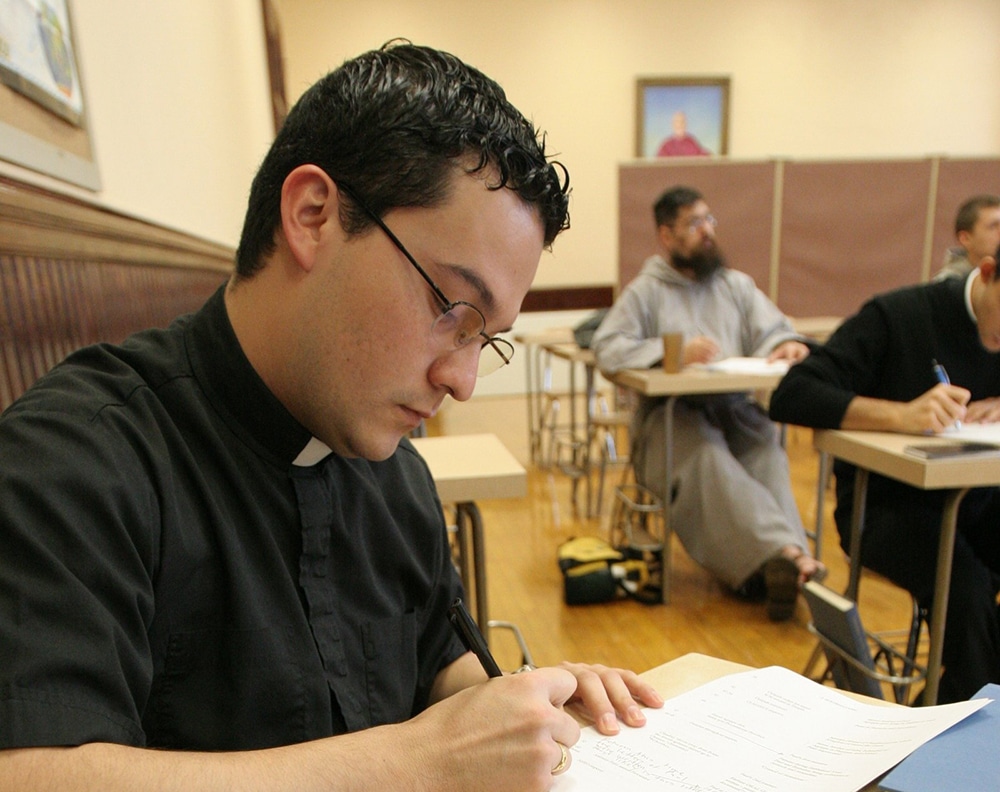
Pros and cons
While there is no silver bullet solution, it would seem that the benefits of local, diocesan-based formation and the downsides of consolidation should be taken quite seriously, especially in light of the present crises in the Church. Given the many obstacles to following the Church’s preference and establishing diocesan-based formation, how might priestly formation nevertheless occur in a renewed and recast structure that recuperates some of the benefits of local accompaniment and ecclesiastical subsidiarity? It is impossible to offer a universal solution, since every region and diocese is different; nevertheless, allow us to offer some initial thoughts on this question:
(1) If consolidation into four or five regional seminaries may be undesirable because of the aforementioned points, a wholesale departure from the current seminary model likewise seems unnecessary. The current seminary model will undoubtedly be necessary in certain circumstances, especially because it specializes in gathering excellent intellectual and pastoral talent that would ordinarily be impossible to gather locally. At the same time, bishops could begin to decrease the amount of time seminarians are sent to the seminary outside of their diocese. The recent introduction of the propaedeutic year drives in this direction: ideally the initial propaedeutic year should be spent in the local diocese (see Ratio fundamentalis, No. 60; “Program for Priestly Formation,” Nos. 121, 127) and not simply entrusted to programs established by seminaries; sending men outside of the diocese without considering the benefits of local formation overshadows once again the notion of subsidiarity at play in this stated preference. Bishops might also consider moving in this direction for discipleship stage formation. Having a local, diocesan-based house of formation for these initial stages of a seminarian’s training would allow for a greater inculcation of the benefits of local accompaniment and presence during priestly formation.
(2) The possibility of local propaedeutic and/or discipleship stage formation is made significantly easier by the many excellent intellectual programs available via distance education; 5 there are many Catholic colleges, universities and graduate schools that could provide the propaedeutic curriculum, any necessary undergraduate coursework, and the philosophical curriculum of the discipleship stage. Therefore, the need for a local faculty faithful to the teachings of the Church and in alignment with the Church’s vision of formation becomes unnecessary. Provided there is an authentic collaboration in the art and the demands of formation between a school and the diocese — such that they come together to constitute a cohesive team of formators — this arrangement could potentially bear great fruit for these years of seminary formation.
(3) Short of a local seminary, establishing a house of formation within a diocese has its immediate upsides as well as its challenges. A local house of formation would remove the necessity for room and board and travel expenses for men attending seminary outside their diocese, and it may not require the purchase of a building (since many dioceses have old rectories, convents and schools that might be utilized). This could greatly reduce the cost per seminarian, perhaps from an approximate average of $50,000/year (tuition, fees, room and board at the seminary) to less than $20,000/year for a house of formation for both the propaedeutic and discipleship stages. At the same time, even if an academic program is utilized by way of distance education, the proper formational personnel will need to be in place in accord with the “Program for Priestly Formation,” especially among the presbyterate. This can pose significant problems in our present situation, especially given the lack of priests for parish assignments. Nevertheless, the importance of formation generally — and local formation specifically — indicates that an adjustment of priorities might be in order. While priests are desperately needed in parishes, such formational roles would not need to remove them entirely from the dioceses’ immediate pastoral concerns; it may be easier to find formators for a house of formation than it might seem, if only because many priests may feel called to assist these men spiritually and pastorally.
These thoughts concerning the renewal of seminary formation are not so much concrete proposals for implementation, but rather attempts to indicate potential — and provocative — pathways forward. While consolidation into regional seminaries is one such path, it may be the case that something more is required — not so much for the consolidation of structures and resources, but for the consolidation of persons in authentic communities of faith and formation that are marked by personal accompaniment and a concern for ecclesiastical subsidiarity.

